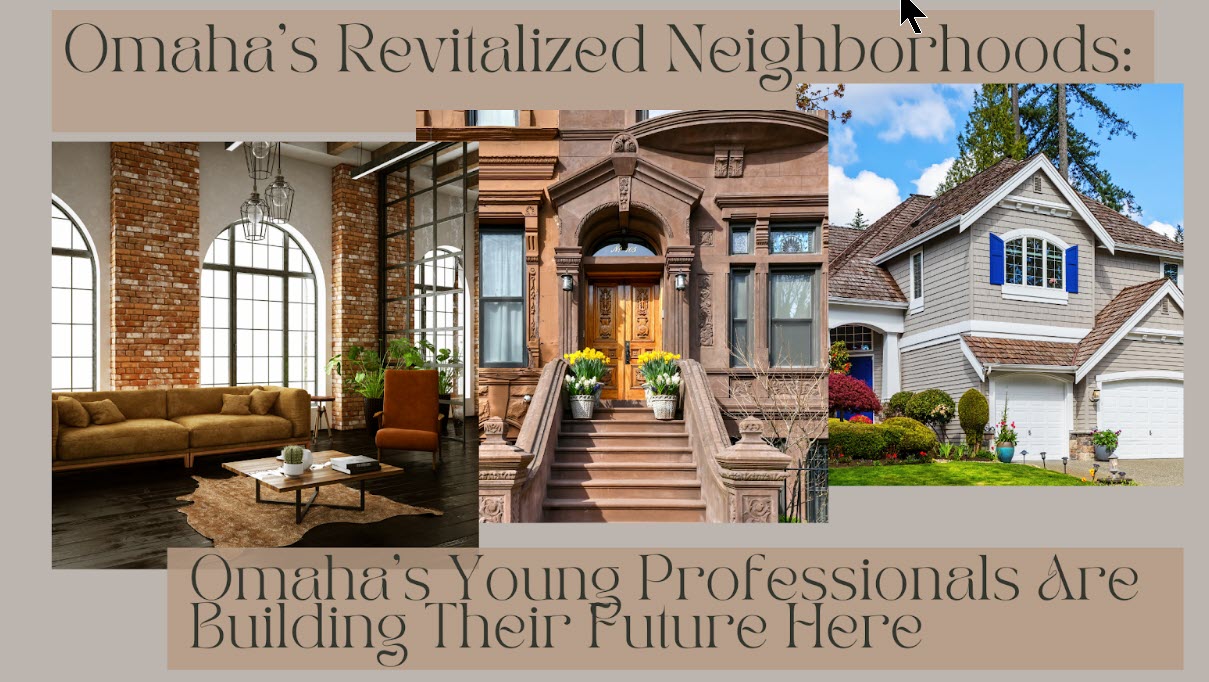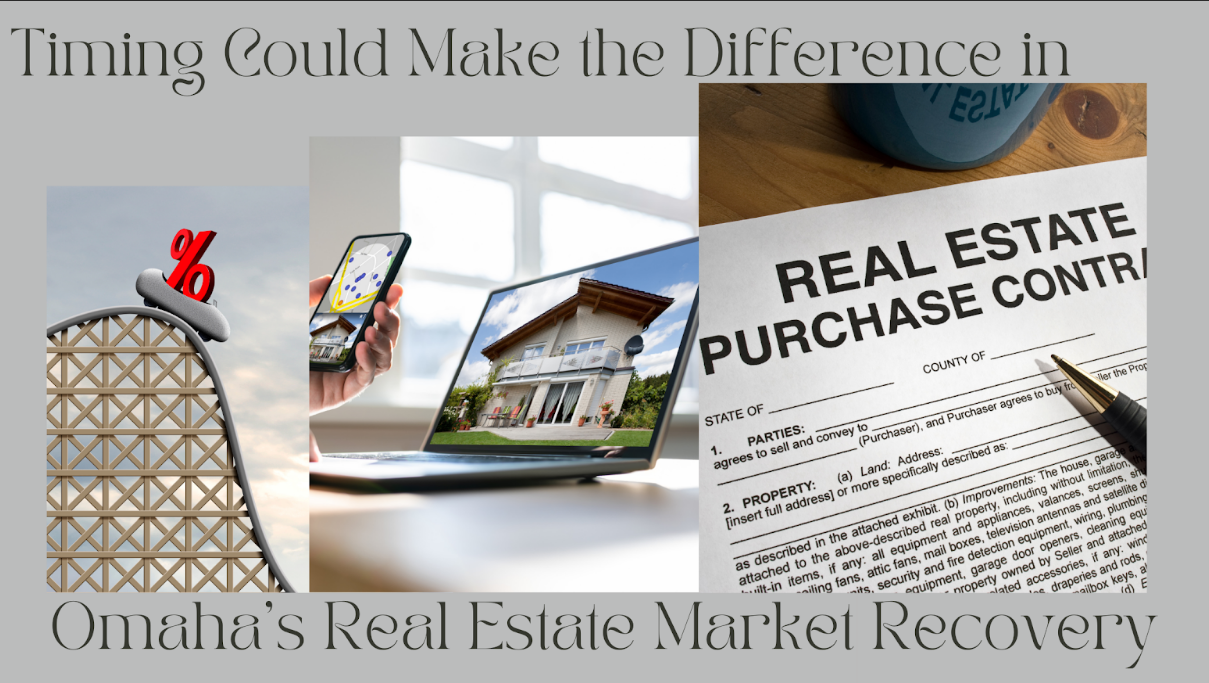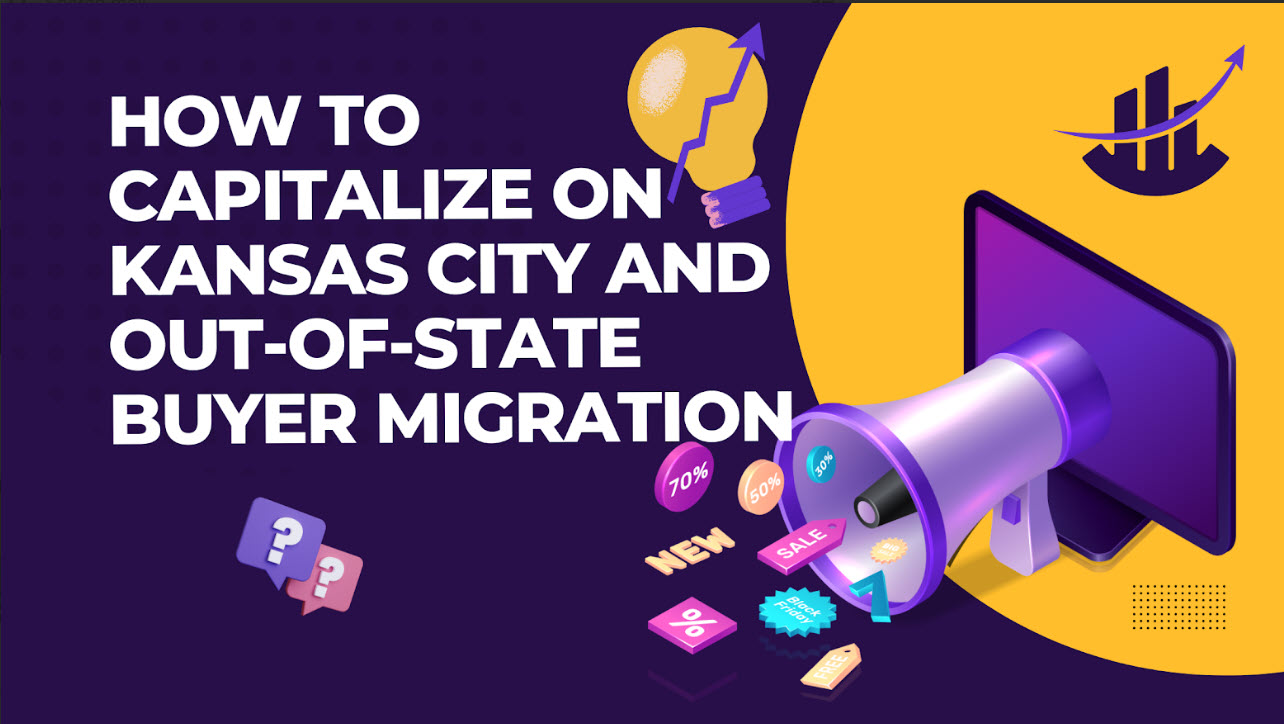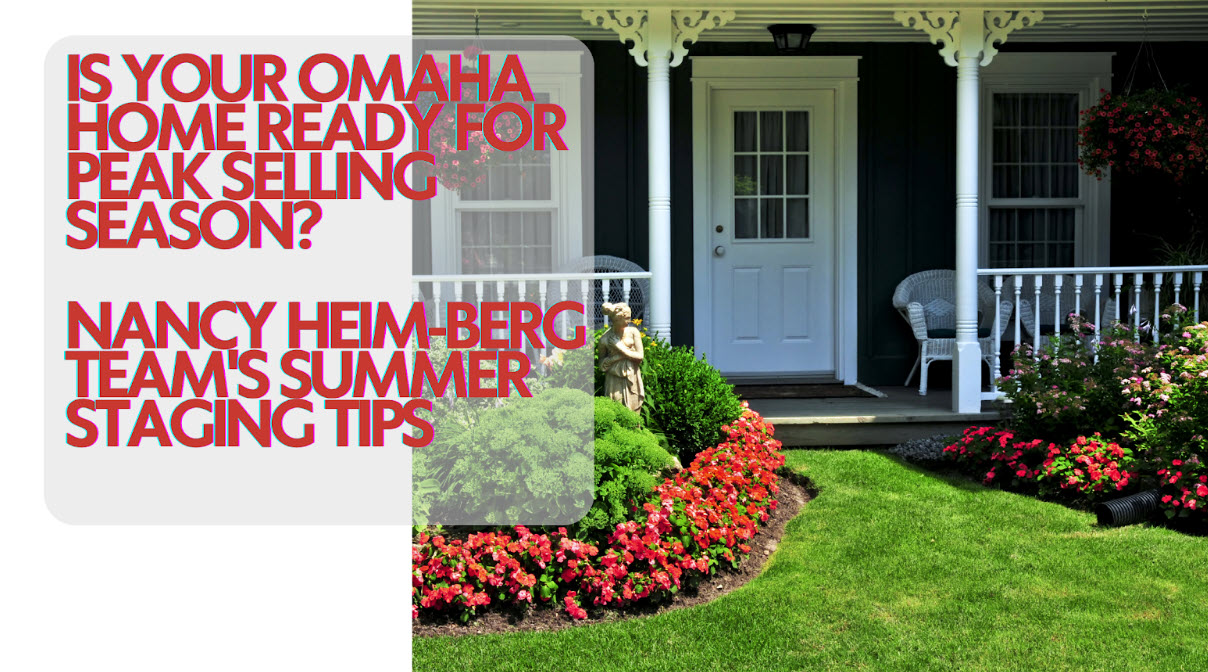
Hello Omaha, and welcome to our blog. Today we wanted to share crucial family-friendly information about Omaha neighborhoods; information that may be surprising, new, and helpful for those of you with young children.
The Heim-Berg Team Members are long-time Omaha residents and professionals who've watched our neighborhoods evolve, schools flourish, and communities grow stronger over the years. There's something truly special about raising a family in the heartland, and we're excited to share our insider knowledge about the best family-friendly neighborhoods Omaha has to offer in 2025.
Whether you're relocating from out of state, looking to upgrade within the metro, or considering your first home purchase, choosing the right neighborhood is one of the most important decisions you'll make for your family's future. We've walked these streets, attended school board meetings, coached little league games, and helped hundreds of families find their perfect fit in this fantastic city. Our specific focus today is to share what makes each of these neighborhoods special for families like yours.
Elkhorn: Where Small-Town Charm Meets Big-City Convenience
If you're dreaming of that perfect suburban lifestyle with top-notch schools and a genuine sense of community, Elkhorn should be at the top of your list. Originally founded as an independent city along the Elkhorn River, Omaha annexed this area in 2005; however, the town has beautifully maintained its small-town character while gaining access to all the benefits of being part of a central metropolitan area.
So, what makes Elkhorn special for families? The Elkhorn Public Schools district consistently earns "Excellent" ratings from the state of Nebraska, which means your children will have access to some of the finest education in the region. Schools like Elkhorn South High School have gained national attention for their academic achievements, state-of-the-art facilities, and strong sense of community. The district serves about 11,300 students across 23 schools, maintaining smaller class sizes and a dedicated teaching staff that truly knows each student.
Walking through Elkhorn's neighborhoods, you'll notice the careful planning that went into creating family-friendly environments. Tree-lined streets connect to excellent park systems, and the classic central street business district offers unique local shops and restaurants that have become community gathering places. Local favorites like Maximosa's Mexican restaurant and Boyd & Charlie's BBQ create that hometown feel where everyone knows your name.
Let’s get down to the real numbers. So what can you expect to invest in an Elkhorn home? Currently, Elkhorn ranks as one of the higher-priced areas in the Omaha metro area, with a median home price of roughly $520,000. Nevertheless, families consistently tell us the investment is worth every penny.
We think the reason is that you're not just buying a house; you're buying into a community that values education, safety, and quality of life. Homes here typically sell within about 34 days, and the market remains strong with steady appreciation over time.
The commute is always vital for our clients. For families where one or both parents work in downtown Omaha, you're looking at a comfortable 20 to 25-minute commute to the heart of the city. If you work at a major company like ConAgra downtown or the Charles Schwab campus (the former TD Ameritrade location) in west Omaha, your drive times are very manageable. The Schwab campus, which sits about 20 minutes west of downtown, is practically in Elkhorn's backyard.
Dundee: Where History Meets the Modern Family's Lifestyle
Did you know that Dundee was Omaha's first suburb, established in 1880? The neighborhood contains the perfect balance of historic charm and modern family needs. There's something magical about Dundee that captures families' hearts immediately. You might even bump into Warren Buffett at the local coffee shop, since the Oracle of Omaha has called Dundee home for decades, living in the same modest house he purchased after college.
So what’s the Dundee family experience like? Dundee's claim to fame is Memorial Park, which boasts 67 acres of green space where families gather for the annual Memorial Park Concert, kids' softball games, and countless weekend picnics. The park's rose garden is particularly stunning during peak bloom season, and the walking trails provide safe spaces for evening family strolls and morning jogs.
The housing stock in Dundee tells a story of American architecture at its finest. You'll find beautiful Colonial, Georgian, and Tudor Revival homes alongside updated apartments, condos, and rental options. This diversity means families at different stages of life and varying budgets can find their place in the community. Whether you're a young family starting in a charming duplex or looking for that forever home with historic character, Dundee delivers options.
You need to know a little about Dundee schools and the community. While Dundee falls within the Omaha Public Schools district, families here have access to excellent options, including Saint Margaret Mary Catholic Parish & School and the prestigious Brownell-Talbot College Preparatory School.
The neighborhood structure is meant for walkability. This means kids can often bike or walk to school safely, and the strong community involvement ensures there are always neighbors looking out for each other's children.
It’s also essential to understand Dundee from an investment perspective. The median home price in Dundee runs about $413,000, positioning it as a premium neighborhood that holds its value exceptionally well. You'll often get more character and craftsmanship than you'll find in newer construction when you invest in a historic Dundee home. However, some properties may need updating to meet modern family needs.
One of Dundee's most significant advantages is its proximity to everything. You're just 5 to 15 minutes from downtown Omaha, making it incredibly convenient for parents working at companies like ConAgra, Mutual of Omaha, or any of the downtown corporate headquarters. The neighborhood's central location also means easy access to both Midtown entertainment districts and West Omaha suburban amenities.
Benson: For The Creative Family
If your family values creativity, diversity, and authentic community character, then you can't overlook Benson. This historic neighborhood, initially founded in 1887 as a separate town, has transformed into one of Omaha's most eclectic and welcoming areas while maintaining its affordability and accessibility for young families.
Families looking for a balance of urban energy and family-friendly atmosphere love Benson. The famous Maple Street corridor buzzes with local businesses, art galleries, and family-owned restaurants. At the same time, the surrounding residential areas offer quiet, tree-lined streets perfect for raising children.
Benson provides plenty of opportunities for family activities and educational experiences. The Beautiful Community gardens, neighborhood parks, and the excellent Benson Library are a few of the most popular places for families.
The music scene here is legendary, but it's family-friendly too. Many venues offer all-ages shows and community events that welcome families. The area celebrates creativity, and its artistic flair creates an environment where kids grow up surrounded by local artists, musicians, and entrepreneurs who become positive role models and mentors.
Benson is one of the most affordable family-friendly neighborhoods in the Omaha metro area, particularly shining with affordable excellence for families with smaller budgets. The median home price sits around $215,000. This affordability doesn't mean compromising on quality of life – you're getting tremendous value in a neighborhood that's rapidly appreciating as more families discover its charms.
The housing mix includes everything from beautifully restored historic homes to modern apartment complexes, giving families flexibility as their needs change. Many young families start here in smaller homes and either renovate and expand or move up within the neighborhood as their families grow.
What about Benson’s schools and learning? Benson families have access to several educational options within the Omaha Public Schools system, as well as nearby private schools. If your family loves the arts, then you'll appreciate that the neighborhood's commitment to arts education, which means kids often have access to music lessons, art classes, and creative programs right in their backyard.
Commuting considerations from Benson. From Benson, you're looking at about 10 to 20 minutes to reach most major employment centers. Downtown jobs are easily accessible, and the neighborhood's central location provides good access to employers throughout the metro area.
Blackstone: Where Young Families Thrive
The Blackstone District represents one of Omaha's most remarkable urban renewal success stories, and it's become a magnet for young professionals starting families who want walkable urban living without sacrificing family-friendly amenities.
You can’t discuss Blackstone without talking about its historic transformation. This neighborhood's journey from "Funeral Home Row" during the Great Depression to today's vibrant dining and entertainment district is genuinely remarkable. The beautiful historic mansions from the 1880s have been lovingly restored, and new mixed-use developments provide modern housing options steps away from some of the city's best restaurants and entertainment venues.
We find that Blackstone families love the walkability in this neighborhood. You can stroll to Coneflower Creamery for the kids' favorite ice cream, grab fresh bread from local bakeries, and enjoy dinner at family-friendly spots like The Blackstone Meatball, all within a few blocks of home.
Recent renovations to the neighborhood park provide a perfect playground for little ones, and the area's commitment to preserving green space means kids have safe places to play outdoors.
What sets Blackstone apart is how it manages to feel both sophisticated and family-oriented urban living. Young parents can enjoy craft cocktails at Farnam House Brewing while kids play board games in designated family areas. The second Saturday of each month brings art and food fairs where families can explore local galleries and enjoy restaurant specials together.
Blackstone's proximity to UNMC, Creighton University, and UNO attracts educated professionals, creating a community of families who value education, culture, and community involvement. It's common to see families with strollers heading to weekend farmers' markets or community events together.
Housing and investment is also a little different in Blackstone. Most families in Blackstone start as renters, since the area is predominantly apartments and condos rather than single-family homes. However, this rental market is sophisticated and well-maintained, with everything from converted historic mansions to modern luxury apartments. While specific pricing varies widely based on the type of housing, the area offers good value for families who want to live in the heart of the action.
Most attractive to some clients is the convenience factor. Blackstone's central location means quick commutes to virtually anywhere in the metro. Downtown jobs are just minutes away, and the neighborhood serves as a hub connecting other desirable areas like Dundee, Midtown Crossing, and Aksarben Village.
West Omaha: The Gold Standard for Growing Families
West Omaha. When families talk about that "ideal suburban lifestyle," they're often describing what West Omaha delivers so well. This area has become synonymous with excellent schools, safe neighborhoods, and family-friendly amenities that support every stage of family life.
Here’s what our clients feel West Omaha gets right. The Millard Public Schools district serves much of West Omaha and consistently earns "Great" ratings from the state. With about 23,600 students across 37 schools, Millard has perfected the balance of maintaining high academic standards while offering extensive extracurricular programs that help kids discover their passions. Families specifically seeking top-tier education find that schools like Millard North and Millard West High Schools meet their needs.
The neighborhood planning in West Omaha prioritizes families at every level. Wide sidewalks accommodate strollers and bikes, parks have been strategically placed within walking distance of most homes, and the retail development includes family-focused businesses alongside upscale shopping and dining options.
West Omaha delivers everything busy families need within a reasonable radius. It is the complete family package. Soccer fields for weekend tournaments, swimming pools for summer fun, libraries with robust children's programming, and shopping centers that make errands manageable, even when the kids are with you.
You'll find that most homes in West Omaha include modern conveniences like attached garages, open floor plans, and ample storage space, thanks to the area's new construction and newer subdivisions. All of which makes family life more manageable.
You’ll find both investment opportunities and value in West Omaha. The median home price in West Omaha runs around $370,000, positioning it as a premium but also accessible for many families to make a sound financial decision and lifestyle choice. Steady appreciation and strong resale values support a sound financial investment. The area continues to develop thoughtfully, with new construction maintaining high standards and established neighborhoods holding their value exceptionally well.
Employment access is where West Omaha shines for working families. The Charles Schwab campus is practically next door, and commutes to downtown Omaha typically run 15 to 25 minutes, depending on your exact location. Major employers throughout the metro are easily accessible, and the area's continued business development means new opportunities continue to emerge close to home.
So, what matters most to you when you make your decision? We've helped hundreds of families over the years. The most important thing we've learned is that the "perfect" neighborhood is about finding the best fit for your family's specific values, timeline, and financial situation.
If top-rated schools and a suburban lifestyle are your priorities, and you're prepared to invest in a premium market, Elkhorn and West Omaha deliver exceptional value if you're planning to live here long-term. The stability and amenities that these areas offer help support your family life. Excellent childcare options, robust youth sports leagues, and great schools provide a strong neighborhood foundation for your family.
For families who value character, community involvement, and want to be part of a neighborhood's ongoing story, Dundee offers that perfect blend of history and modern convenience. You're investing in a community that's already established its identity while continuing to evolve thoughtfully.
If affordability and creativity matter most to your family, Benson provides incredible value and authentic community character. Young families often find that this neighborhood gives them the financial breathing room to enjoy their lives rather than survive them, while still providing access to quality schools and community amenities.
And for families who want urban convenience with family-friendly amenities, Blackstone represents the future of family living in metropolitan areas – walkable, diverse, and sophisticated without being pretentious.
Let's get specific about what these school choices mean for your children's future. The Elkhorn Public Schools district has earned its "Excellent" rating through consistent performance across all grade levels, with powerful programs in STEM fields, performing arts, and athletics. Class sizes tend to be smaller, and the district is financially stable.
Millard Public Schools' "Great" rating reflects their ability to maintain quality across a diverse student population, as they serve the largest student population in the entire metro area. The district offers extensive AP programming, dual-credit opportunities with local colleges, and career pathway programs that prepare students for both college and immediate workforce entry.
Omaha Public Schools faces more challenges with its "Needs Improvement" rating, but families shouldn't dismiss the entire district. Schools like Brownell-Talbot and other specialized programs within OPS provide excellent educational opportunities, and many neighborhood schools perform well above district averages. The key is researching specific schools rather than making decisions based solely on district-wide ratings.
Let's talk honestly about getting to work every day, because this impacts family life more than almost any other factor. Suppose you're working downtown at companies like ConAgra, Mutual of Omaha, or any of the corporate headquarters in the central business district. In that case, every neighborhood we've discussed provides reasonable commute times.
It will only take you 20 to 30 minutes to get from Elkhorn or West Omaha, depending on traffic and weather. Many families find the trade-off worthwhile for the suburban lifestyle and school quality these areas provide. The commute infrastructure is well-developed, with multiple route options that help avoid the worst traffic bottlenecks.
Dundee and Blackstone offer the best of both worlds with 5 to 15-minute commutes to downtown, while still providing distinct neighborhood character and family amenities. These shorter commutes translate to more family time every day, which can be invaluable during the busy years of raising children.
Suppose you're working at the Charles Schwab campus in west Omaha. In that case, you're looking at very short commutes from Elkhorn or West Omaha, moderate commutes from Dundee, and slightly longer but manageable commutes from Benson or Blackstone.
Let’s chat about the financial reality for families. Beyond the home purchase price, let's talk about the total cost of family life in each area. Elkhorn and West Omaha command premium prices, but families often find their overall expenses are more predictable. Newer infrastructure means fewer surprise home repairs, excellent schools reduce the need for private education or tutoring, and safe neighborhoods mean less worry about security systems or private transportation for kids.
Benson offers the most affordability, but smart families budget for potential home updates since many properties are older. The trade-off often works in families' favor, since the lower purchase price provides flexibility for improvements over time, and the neighborhood's ongoing appreciation means you're building equity while you improve your home.
Dundee and Blackstone fall somewhere in between, offering character and convenience at prices that reflect their desirability without reaching the premium levels of the suburban areas. Property taxes across Douglas County run about 1.75%, which is higher than some neighboring areas but reflects the quality of public services and infrastructure that make family life run smoothly. Most families find this investment worthwhile when they see the quality of parks, libraries, and public safety services their tax dollars provide.
We're not just real estate professionals; we're your neighbors, and that’s why we know these neighborhoods. We've coached kids' sports teams in Elkhorn, attended school board meetings in Millard, enjoyed family dinners in Dundee, explored art galleries in Blackstone, and watched fireworks from Benson parks. This isn't theoretical knowledge for us – it's lived experience that we bring to every family we help.
We've seen neighborhoods evolve, watched schools improve their programs, and helped families navigate the challenges and opportunities that come with each area. When we recommend a neighborhood, we're thinking about your family's next five to ten years, not just where you want to live next month.
Our clients appreciate our detailed, honest service. Will a new construction project impact your commute next year? Are school boundary changes up for review? Will new community developments impact your property values? We'll always let you know! Informed families make better decisions, and better decisions lead to happier families.
The Omaha real estate market in 2025 continues to favor prepared buyers who understand what they're looking for and act decisively when they find it. Each of these neighborhoods offers something special for families. Still, they also have different market dynamics that affect your buying strategy.
In premium areas like Elkhorn and West Omaha, homes often receive multiple offers, so having your financing in order and being prepared to move quickly is essential. In regions like Benson and Blackstone, you have more negotiating room. However, you need to act quickly when you find the home you want.
We always advise our clients to start their search with a clear understanding of their priorities, budget, and timeline. We help families navigate these decisions every day, and we'd love to help your family find its perfect fit in this amazing city we all call home.
Ready to explore what Omaha's family-friendly neighborhoods can offer your family? The Heim-Berg Team brings decades of combined experience helping families just like yours find their perfect home in the ideal neighborhood. We know the schools, the commutes, the community character, and the market dynamics, and we will share the most up-to-date information with you so you can make an informed, intelligent investment.
Whether you're relocating from another state or simply moving across Omaha, we'll make sure you have all the information you need to choose the neighborhood where your family will thrive.
Contact The Heim-Berg Team today:
Phone: (402) 677-9024
Website: https://www.omahaarealiving.com/
Your family's perfect neighborhood is waiting – let's find it together!
 Omaha's real estate boom is more than rising numbers—it's a transformation of historic neighborhoods into dynamic communities prized by young professionals and investors seeking both opportunity and lifestyle.
Omaha's real estate boom is more than rising numbers—it's a transformation of historic neighborhoods into dynamic communities prized by young professionals and investors seeking both opportunity and lifestyle.

















